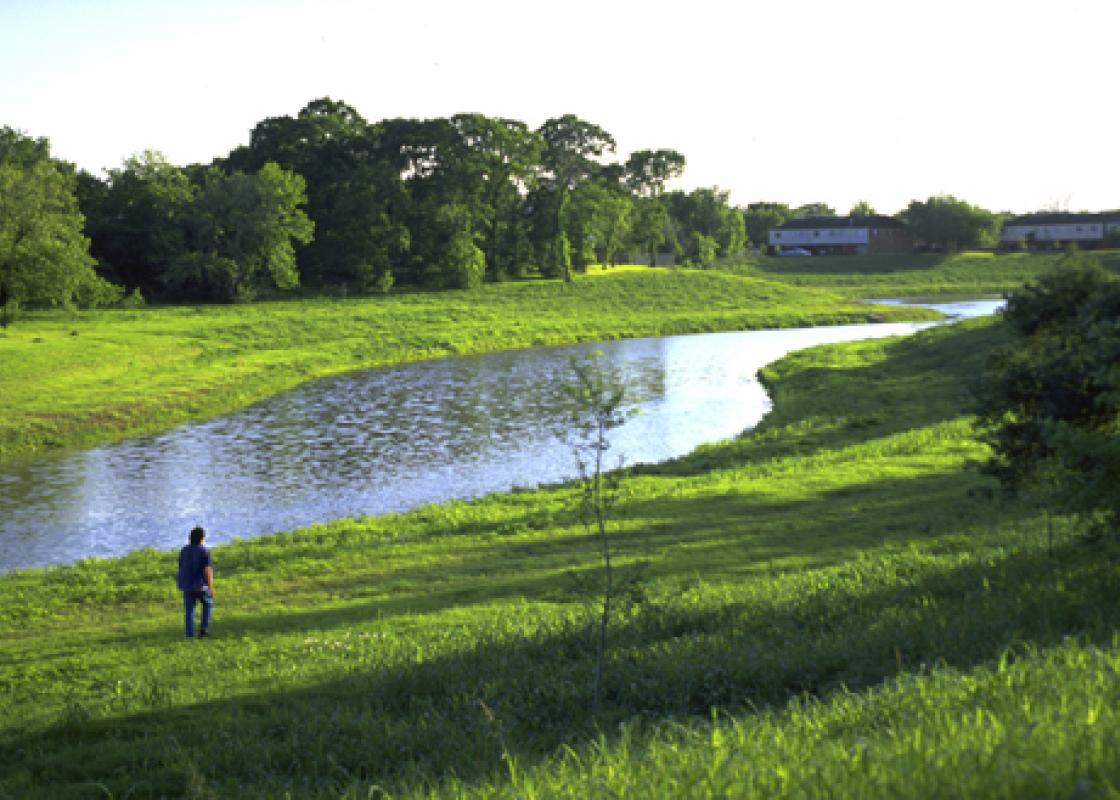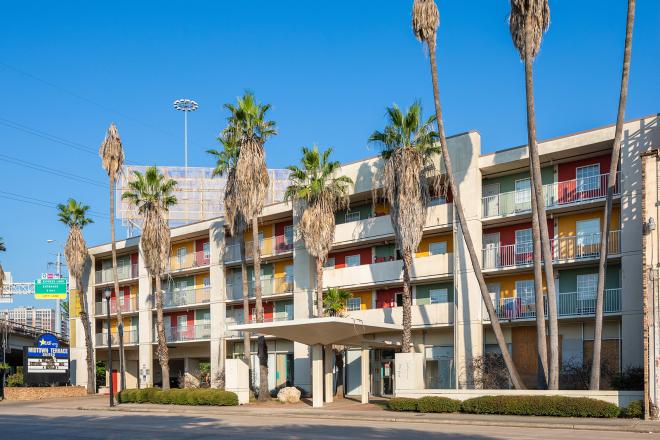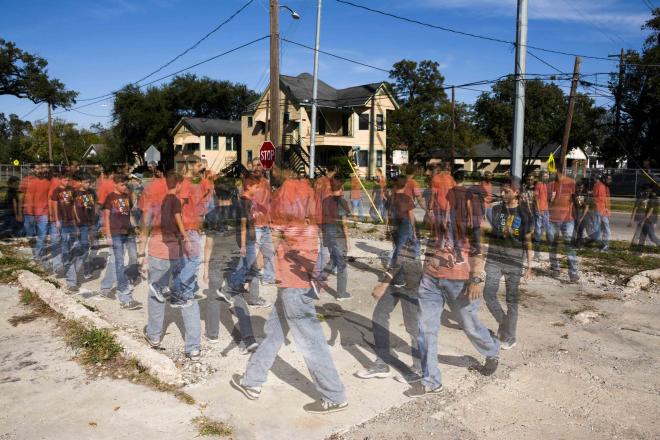
Horses gallop through Montana-sized utility corridors that crisscross Houston.
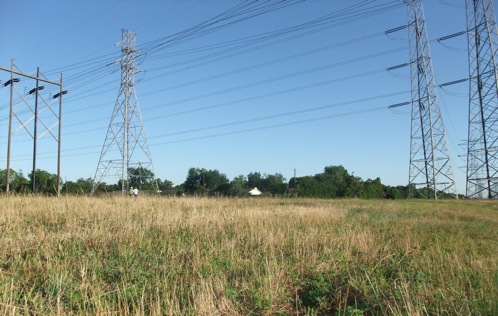
A corridor from Sims to Buffalo bayous meets one connecting to Sugarland.
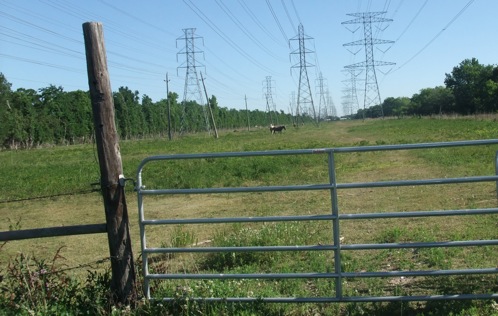
The real barriers are not fences, but liability and fear of lawsuits.
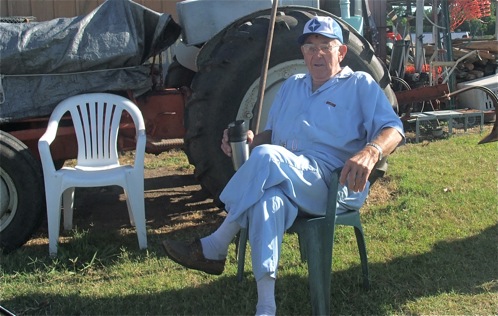
Johnny manages volunteers at the Braes Interfaith Ministries garden.

Braes Interfaith Ministries' food pantry tends a garden under the lines.

Sims Bayou, SWA Group, image from ASLA website
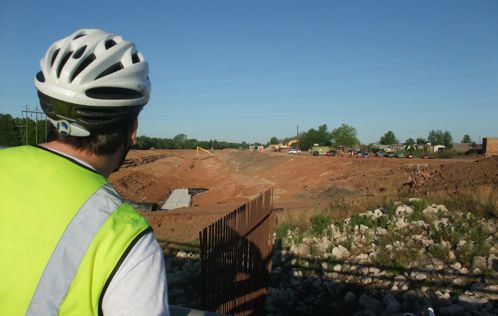
Utility corridors could connect trails constructed along Sims and other bayous.

Two bills before the Texas legislature would create the opportunity for bike trails to crisscross Houston at no cost to taxpayers, but to get them through at this stage will take extraordinary mobilization. Lisa Gray wrote about this effort in the Houston Chronicle and David Nova Lomax covered it for Houston Press. OffCite brings to you on-the-ground photographs showing just how unexpectedly beautiful these trails could be.
Creating rights of way by purchasing land from multiple owners or declaring eminent domain is a complex, time consuming, and expensive process. The utility corridors have a single owner, CenterPoint Energy.
The bills before the Texas legislature, SB 1793 and HB 3802, would limit the liability of CenterPoint and protect it from injury lawsuits. HB 3802, sponsored by Sarah Davis, District 134 State Representative, states that the utility company would not "assume responsibility or incur any liability for...damages arising from or related to any bodily or other personal injury to or death of any person."
One fear of power lines is that electric and magnetic fields might cause cancer. According to National Cancer Institute, "Researchers have not found a consistent relationship between magnetic fields from power lines or appliances and childhood brain tumors."
I spoke with Dr. Winifred Hamilton, an environmental health researcher at Baylor College of Medicine, and asked her about the dangers of power lines. She confirmed that past studies have been inconclusive but also noted that we have virtually no data on longterm exposure. Dr. Hamilton recommended reducing total exposure to cell phones, wireless devices, microwaves, and electrical lines. (Sleeping with a cell phone under your head is a bad idea.)
Dr. Hamilton also considered the positives of bike trails away from traffic congestion and the carcinogens of car exhaust. "Nature deficit is real," she said. "Being around trees and birds is a stress reliever, which can reduce hormones associated with obesity and other health problems."
So do the benefits outweigh the risks? Dr. Hamilton said, "A prudent approach would be to try, whenever possible, to have our bike paths in linear parks where there are no known hazards, but getting people outside, commuting to work, and walking with family in green space is so important to health that, to a limited extent, using utility rights of ways to make connections that enable us to get to places, rather than just bicycle up and down the bayous, seems to me a reasonable approach." The difference between trails for leisure rides and a truly usable network that gets people to work, school, and stores can come down to short connections and the last quarter mile. Dr. Hamilton pointed out that power lines "go to places where there are people by design." The whole purpose of a power line is to provide electricity to places where people are and need to go. Strategic and targeted use of land around power lines could bridge gaps and connect the paths in our linear bayou parks to key destinations.
The utility corridors are already used for multiple purposes, including horse stables and gardens. Braes Interfaith Ministries maintains a garden on land in the midst of the utility corridor that runs from Stella Link through West University and Bellaire, the Greenway Plaza area, and Memorial Park. Wild parrots nest in the towers and trains pass by in the distance as volunteers weed and water. The land easily accommodates these uses with room for roaming and rambling. Although the site is well within the city, you feel as if you are in big sky western country.
Tom McCasland, who is organizing for the passage of the bills, underscored Dr. Hamilton's analysis. "The really important thing is that different organizations are developing miles and miles of trails on all these bayous, but they don't link up with each other," he said. The bayous run west to east. Several utility corridors run north-south and would connect the growing network of bayou trails.
If this change to the law passes, then local groups---city parks, management districts, TIRZs, and non-profits---could establish licenses with CenterPoint for specific stretches of the utility corridors. According to McCasland, CenterPoint has testified at hearings that it would be willing to participate in such agreements.
Proponents suggest that the trails would raise Houston's profile nationally. McCasland says, "We will have one of the most, if not the most, impressive grids for hiking, biking, and running."
The bills were not scheduled for a vote, which limits their chances for passage this session. There are, however, options such as piggybacking a bill that is scheduled for a vote. To learn more and take action, visit the Utility Line Hike & Bike Trails Facebook Page.
Below is a map showing the utility corridor where the photographs in this post were taken.
View Sims Bayou in a larger map


